You’ve been asked to give a eulogy, and you’re probably panicking a little. Maybe a lot. That’s completely normal. The good news? You don’t need to be a professional speaker or writer to honor someone’s memory in a way that truly matters.
Quick Resource:
Create a heartfelt, structured tribute effortlessly with the Eulogy Generator.
Most eulogies run about 5-10 minutes – long enough to share meaningful stories, short enough that people stay engaged during an emotional time. According to Funeral Partners, “a good eulogy is usually between 3-5 minutes long, but can be as long as 10 minutes.” Knowing this helps you figure out how much to include without overwhelming yourself or losing people’s attention.
Here’s the thing though – writing a meaningful eulogy isn’t about finding perfect words or delivering a flawless speech. It’s about sharing genuine memories that help everyone remember why this person mattered. Whether you’re honoring a parent, friend, or even a beloved pet, the approach is the same: focus on stories that show who they really were.

What Makes Some Eulogies Unforgettable (And Others Forgettable)
You’ve probably sat through eulogies that felt flat – like someone reading a resume out loud. Then there are others that leave you feeling like you truly knew the person, even if you’d never met them. The difference isn’t about speaking skills or fancy words.
Great eulogies paint pictures with stories. They show us who someone was through moments that mattered – the way they made their famous Sunday pancakes, how they never missed a grandchild’s soccer game, or their habit of leaving encouraging notes in lunch boxes.
The most powerful tributes focus on connection over chronology. Instead of walking through every job and achievement, they reveal values through actions. They show love through specific examples rather than general statements. As research on eulogy virtues notes, “most of us would say that the eulogy virtues are more important than the résumé virtues” according to Humanistic Systems, yet we often struggle to focus on character over accomplishments when writing tributes.
Who Should Actually Give the Eulogy
Family members usually get first dibs, but that doesn’t mean they’re always the right choice. Sometimes a close friend knew different sides of someone. Other times, a colleague witnessed professional qualities that family never saw. The key is finding someone who can speak authentically about the person’s impact.
It’s completely okay to say no if you’re asked but don’t feel ready. Grief affects everyone differently, and some people process better by listening rather than speaking. There’s no shame in recognizing your limits during an already difficult time.
Modern funeral services often include multiple speakers anyway. This approach allows different people to share unique perspectives – maybe a child talks about dad’s parenting while a business partner discusses his professional integrity. Video tributes have become increasingly popular too, especially when key people can’t attend in person.
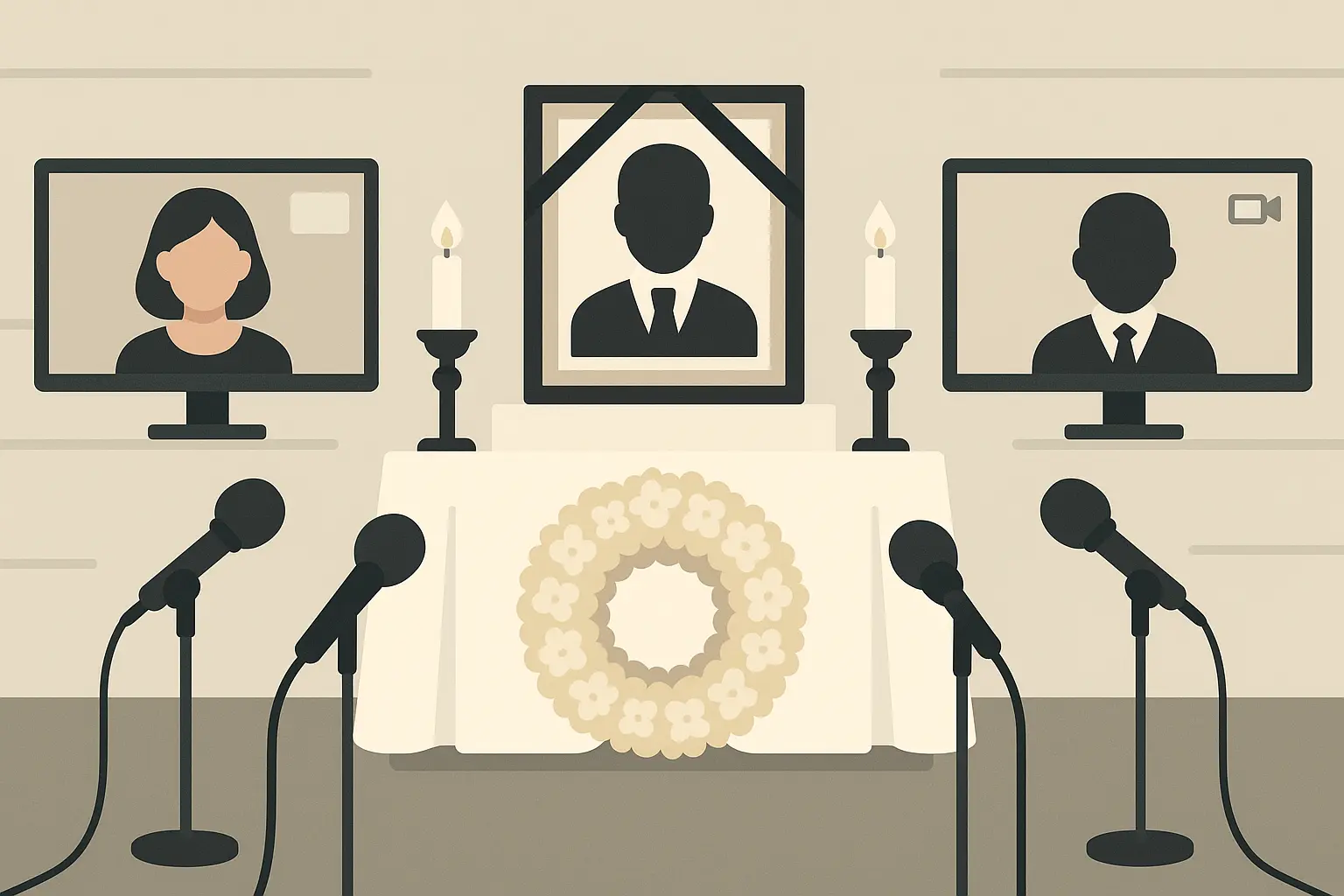
The Building Blocks Every Good Eulogy Needs
Start with Something That Matters
Your first words set the tone for everything that follows. Skip the generic “We’re gathered here today” openings. Instead, start with something that captures who this person really was. Maybe it’s their favorite saying, a story that makes people smile, or a simple truth about their character.
One effective approach is acknowledging the shared loss while highlighting what made this person special. “Sarah had this way of making everyone feel like her favorite person” immediately tells us something meaningful about Sarah while recognizing why we’re all there.
Here’s a strong opening example: “If you knew Mom, you knew that 6 AM phone call was coming. Not because there was an emergency, but because she’d just seen the most beautiful sunrise and couldn’t wait to share it with someone she loved. That was Margaret – always finding beauty in ordinary moments and making sure none of us missed it.”
Stories That Actually Show Character
Stories are where eulogies come alive, but not every memory belongs in one. You need stories that reveal character and show impact. Look for moments that demonstrate values in action. The story about how they always stopped to help stranded motorists shows compassion better than simply saying “he was compassionate.”
Don’t be afraid of gentle humor when it fits the person’s personality. If they were known for terrible dad jokes or always burning the holiday turkey, these quirks made them who they were. The key is ensuring humor feels loving rather than mocking.
For those looking to add appropriate humor, our guide on funny eulogies provides insights on balancing laughter with respect during memorial tributes.
Blend warmth and respect beautifully in your tribute using the Eulogy Generator.
Recent personal eulogies, such as “Eulogy for My Father” in Moment Magazine, demonstrate how powerful personal stories can be when they reveal character through specific moments – showing how a father’s intellectual curiosity and bridge-building nature shaped his career and family conversations.
Many people worry that including humor is somehow disrespectful. Actually, the opposite is often true. If someone had a great sense of humor, ignoring that creates an incomplete picture. The trick is reading the room and knowing your audience. Gentle, loving humor that celebrates personality traits usually works well.
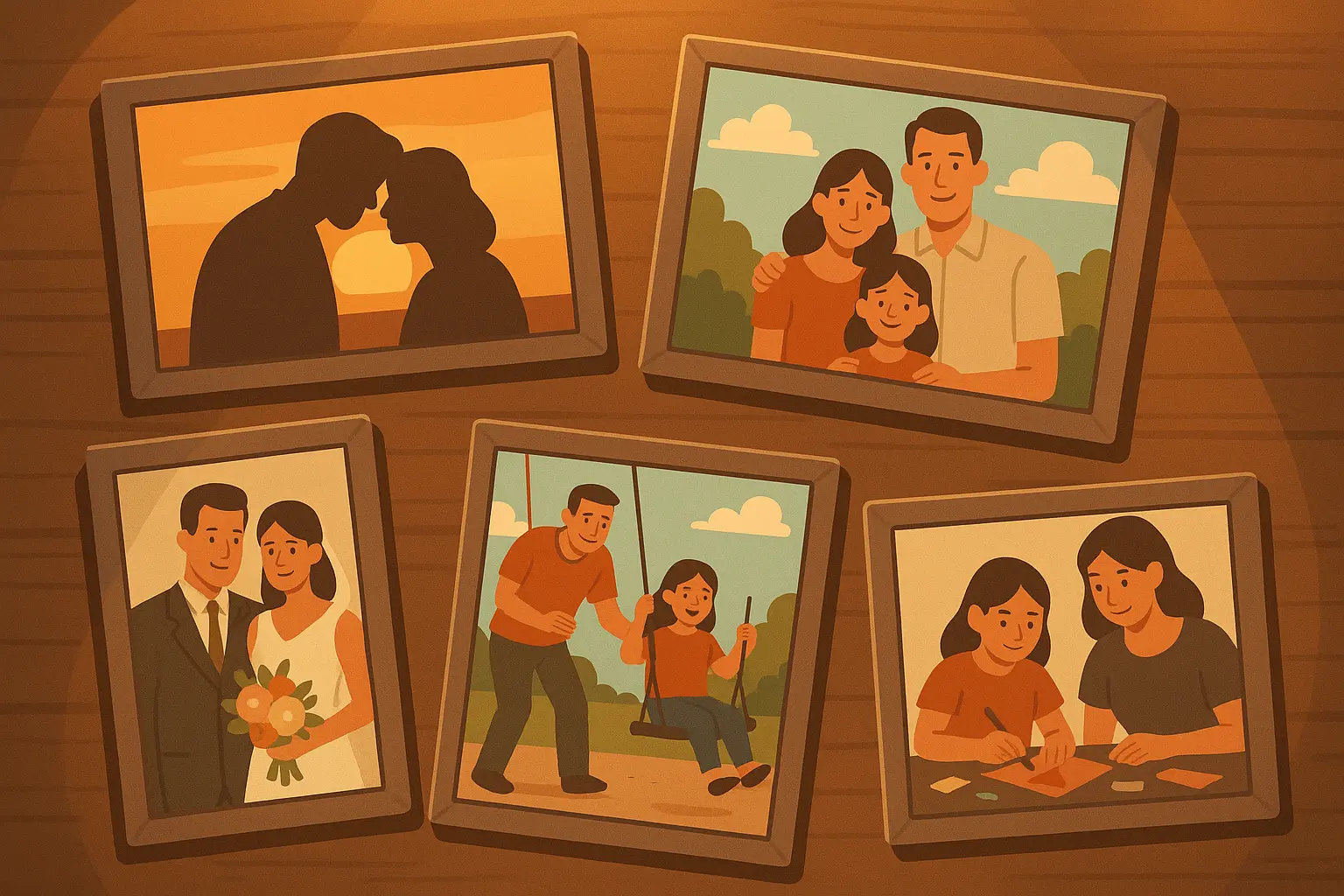
Talk About Their Impact Without Sounding Like LinkedIn
Talking about someone’s achievements without sounding like you’re reading their resume requires focusing on impact rather than titles. Instead of listing every job they held, talk about how they mentored younger colleagues or treated everyone with respect regardless of their position.
Values matter more than accomplishments. The parent who never missed a school play, the friend who always remembered to check in during tough times, the neighbor who shoveled sidewalks without being asked – these actions reveal character and create lasting impact.
Think about the lessons they taught through their actions. What would they want people to remember about how to live well? These insights often provide the most meaningful parts of any eulogy.
How to Actually Write This Thing (Step by Step)
Gathering Your Raw Materials
Starting with a blank page feels overwhelming when you’re grieving. The solution is gathering material before you worry about organizing it. Begin by brain-dumping every memory, story, and detail you can think of. Don’t worry about whether they’re “eulogy-worthy” yet – just get everything down.
Reach out to other family members and friends. They’ll often remember stories you’ve forgotten or share perspectives you never considered. A coworker might recall professional qualities that family never witnessed, while childhood friends can share formative experiences.
Sometimes memories need a little nudging to surface. Try asking yourself specific questions: What was their typical day like? How did they interact with strangers? What made them laugh? What were they passionate about? Think about different roles they played: parent, spouse, friend, colleague, community member. What stories illustrate how they approached each relationship?
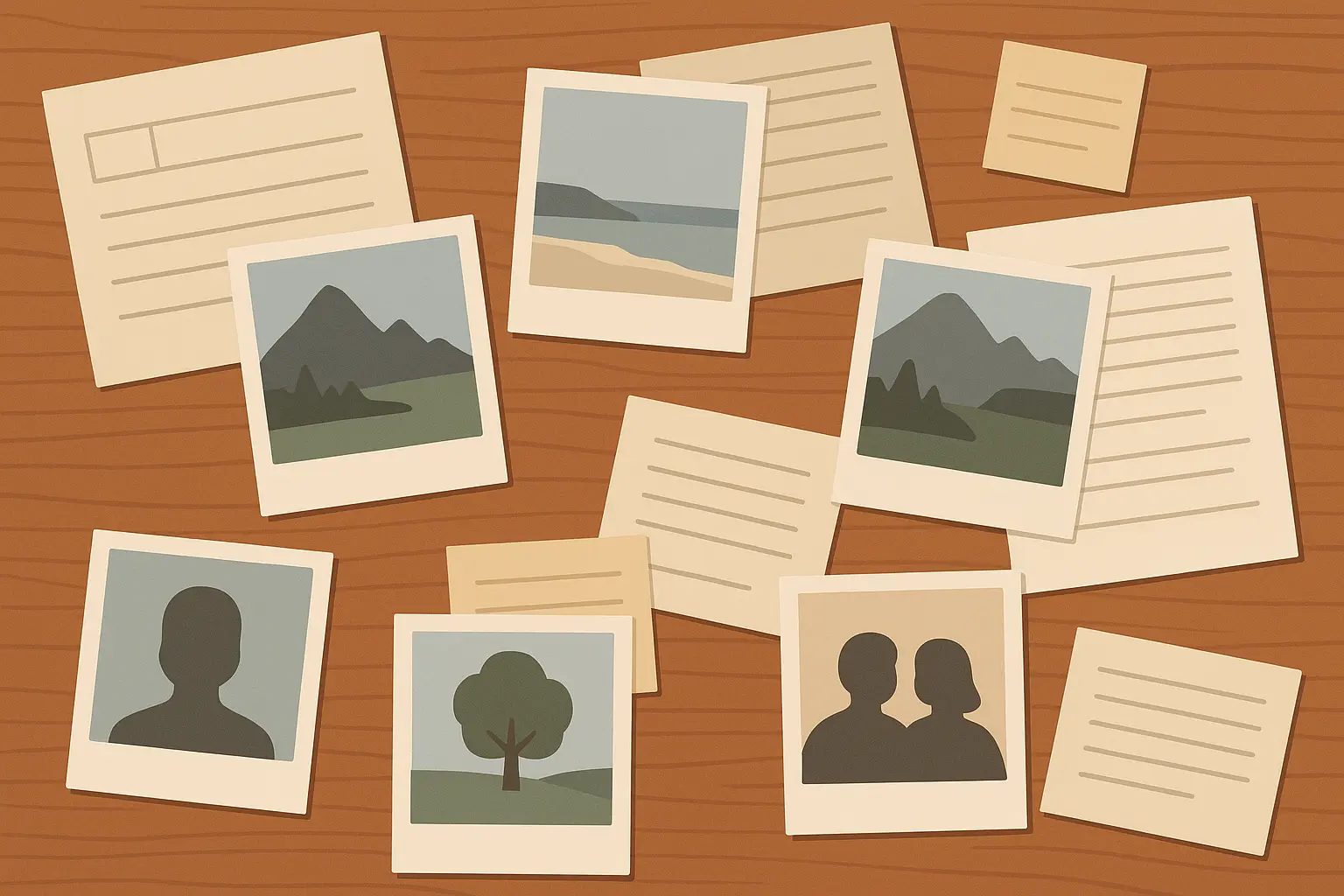
Organizing Your Thoughts So They Actually Flow
With your memories collected, you need to organize them into something that flows naturally. Most effective eulogies follow a simple three-part structure: introduction, body with stories and achievements, and meaningful conclusion.
The body section can be organized several ways. Chronological works well for longer lives with distinct phases. Thematic organization groups stories around character traits or values. Role-based structure discusses them as parent, professional, friend, etc.
Choose the approach that feels most natural for the person you’re honoring. Focus on smooth transitions between sections. Simple phrases like “This caring nature showed up in his professional life too” help guide listeners from one idea to the next.
Don’t try to sound like someone else when writing a eulogy. Your authentic voice – the way you naturally speak – will be more engaging and genuine than attempting formal language that doesn’t feel natural. If you’re typically casual in conversation, don’t suddenly switch to overly formal language.
Making Your Draft Actually Good
Your first draft is just the beginning. Real magic happens during editing, where you refine your message and improve the flow. Read through your entire draft and look for places where the story drags or jumps around confusingly. Cut sections that don’t add value, even if they’re meaningful to you personally.
Check your timing by reading aloud at a natural pace. Ask a trusted friend or family member to review your draft. They can catch unclear sections, suggest improvements, and help ensure you haven’t missed anything important.
Here’s an editing example: Original: “John was a good father who loved his children and worked hard.” Revised: “Every Saturday morning, you’d find John in the kitchen making his famous chocolate chip pancakes, carefully flipping each one while his three kids argued over who got the first stack. That was John – showing love through action, one pancake at a time.”

Different Relationships Need Different Approaches
Honoring Parents – The People Who Shaped Us
Eulogizing a parent presents unique challenges and opportunities. You have intimate knowledge that allows for deeply personal tributes, but you also need to make your words meaningful to everyone present.
Focus on their role as a parent first, but don’t ignore other aspects of their life. Talk about the values they instilled, the lessons they taught, and the family traditions they created. Share specific examples of their parenting style – maybe they never missed a school event or always had time for bedtime stories.
Don’t feel pressured to present them as perfect. Acknowledging their humanity while emphasizing their love and dedication creates a more authentic tribute. For detailed guidance on parent tributes, explore our comprehensive parent eulogy guide which offers specific templates and examples for honoring mothers and fathers.
Write a heartfelt tribute for your parent with the help of the Eulogy Generator.
According to eulogy research, “anybody can deliver a eulogy at a funeral service, but it is usually a family member – spouse, partner, child, grandchild – or close friend of the deceased” as noted by Funeral Partners, highlighting the natural expectation for children to honor their parents.
Celebrating Friends – The Family We Choose
Friendship eulogies have a special quality because they celebrate relationships built on choice rather than obligation. Focus on what drew you together initially and what kept your friendship strong over time. Share stories about adventures you had together, challenges you helped each other through, and the ways your friend enriched your life.
Don’t forget to mention how they treated other people. Friends often witness how someone interacts with strangers, handles service workers, or responds to difficult situations. Our friend eulogy examples showcase various approaches to honoring close friendships and the unique bonds between chosen family members.
Capture your friendship’s true spirit with the Eulogy Generator.
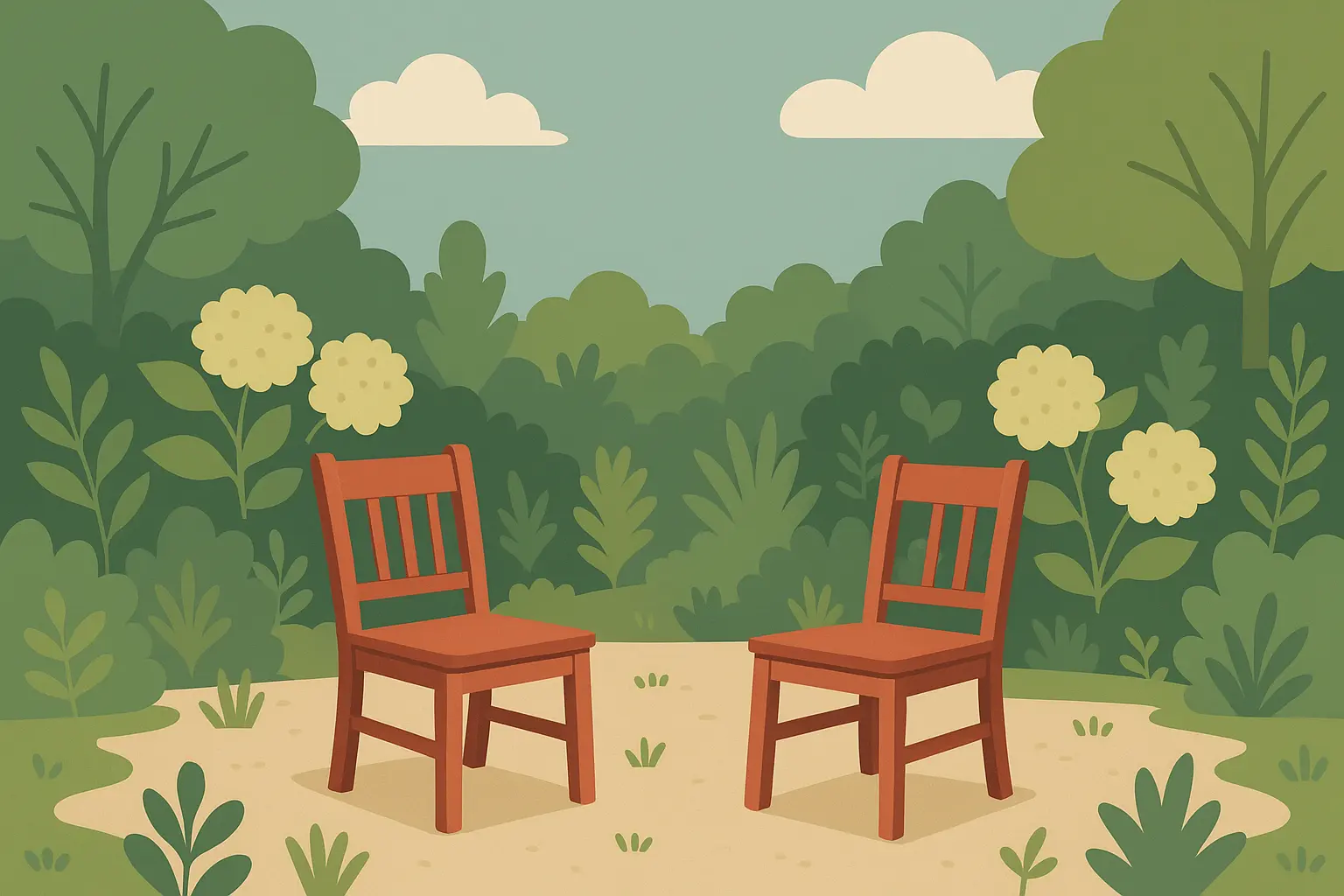
Professional Colleagues and Cultural Considerations
Workplace relationships reveal different sides of people that family might never see. Professional eulogies should highlight both achievements and character traits that made someone valued by their colleagues. Talk about their work ethic, leadership style, and how they treated people at all levels of the organization.
Cultural and religious backgrounds significantly influence how people want to be remembered and what brings comfort to their families. Research the customs and traditions important to your loved one’s culture. Incorporate these elements naturally throughout your eulogy rather than tacking them on at the end.
Don’t Forget About Beloved Pets
Pet eulogies might seem unusual to some people, but anyone who’s loved an animal companion understands the deep bonds that form. Focus on your pet’s unique personality traits and quirks. Talk about their role in daily life – maybe they were the alarm clock who never failed or the therapy animal who sensed when someone needed comfort.
Don’t feel embarrassed about grieving for a pet or wanting to honor them properly. The love was real, the loss is real, and the memories deserve celebration. For those honoring animal companions, our pet eulogy guide provides compassionate guidance for celebrating the lives of beloved pets.
Create a touching tribute for your loyal companion using the Eulogy Generator.

When Things Get Complicated
Sudden Deaths and Complex Family Dynamics
Sudden deaths create unique challenges for eulogy writers. Shock and trauma can make it difficult to focus on positive memories, but that’s exactly what grieving families need most. Focus entirely on the life lived rather than the circumstances of death. Share stories about their dreams, recent accomplishments, and the joy they brought to others.
Not every family relationship is simple or perfect. Sometimes you need to write eulogies for people who had complicated personalities or difficult relationships with family members. Focus on their positive qualities and contributions while acknowledging they were human. Look for common ground – qualities that different family members can agree were positive.
Our guide on crafting eulogies for sudden loss offers specific strategies for navigating the unique challenges of unexpected death while honoring lives cut short.
Find words for even the hardest moments with support from the Eulogy Generator.
Even public figures face complex eulogy challenges, as seen when “Trump attacks Chicago in eulogy for Kirk” according to Politico, demonstrating how personal agendas can sometimes overshadow the purpose of honoring the deceased.
Managing Your Own Emotions
Writing a eulogy while you’re grieving can trigger intense emotions that make the task feel impossible. Take breaks when emotions become overwhelming. Don’t try to write everything in one sitting – grief comes in waves, and some days will be better for writing than others.
Ask for help when you need it. This might mean having someone else gather information, provide emotional support, or even take over the writing if you become too overwhelmed.

Actually Delivering Your Eulogy
Preparing Yourself for the Moment
Delivering a eulogy is emotionally challenging even when you’re well-prepared. Expecting to feel nervous, sad, or overwhelmed helps you prepare for these normal reactions. Practice your eulogy multiple times before the service, but don’t aim for perfection. The goal is familiarity with your content so you can continue even if emotions make it difficult to think clearly.
Have a backup plan. Ask someone to be ready to step in if you become too overwhelmed to continue. Remember that showing emotion during a eulogy is completely appropriate – the audience expects it and often finds it comforting.
Simple techniques can help you maintain composure during delivery. Focus on slow, deep breathing before you begin and during natural pauses. Speak more slowly than feels natural – grief and nerves tend to make people rush through speeches. Use your notes liberally and don’t be afraid to read directly from them when emotions make it difficult to remember what comes next.
Connecting with Your Audience
Remember that everyone in the audience is there because they cared about the person you’re honoring. This shared connection can actually make delivery easier. Acknowledge the audience’s relationship with the deceased using phrases like “as many of you know” or “I’m sure you all remember” to create a sense of shared experience.
Don’t worry about being perfect. The audience wants to hear genuine memories and feelings, not a polished performance. Your authenticity matters more than your delivery skills.
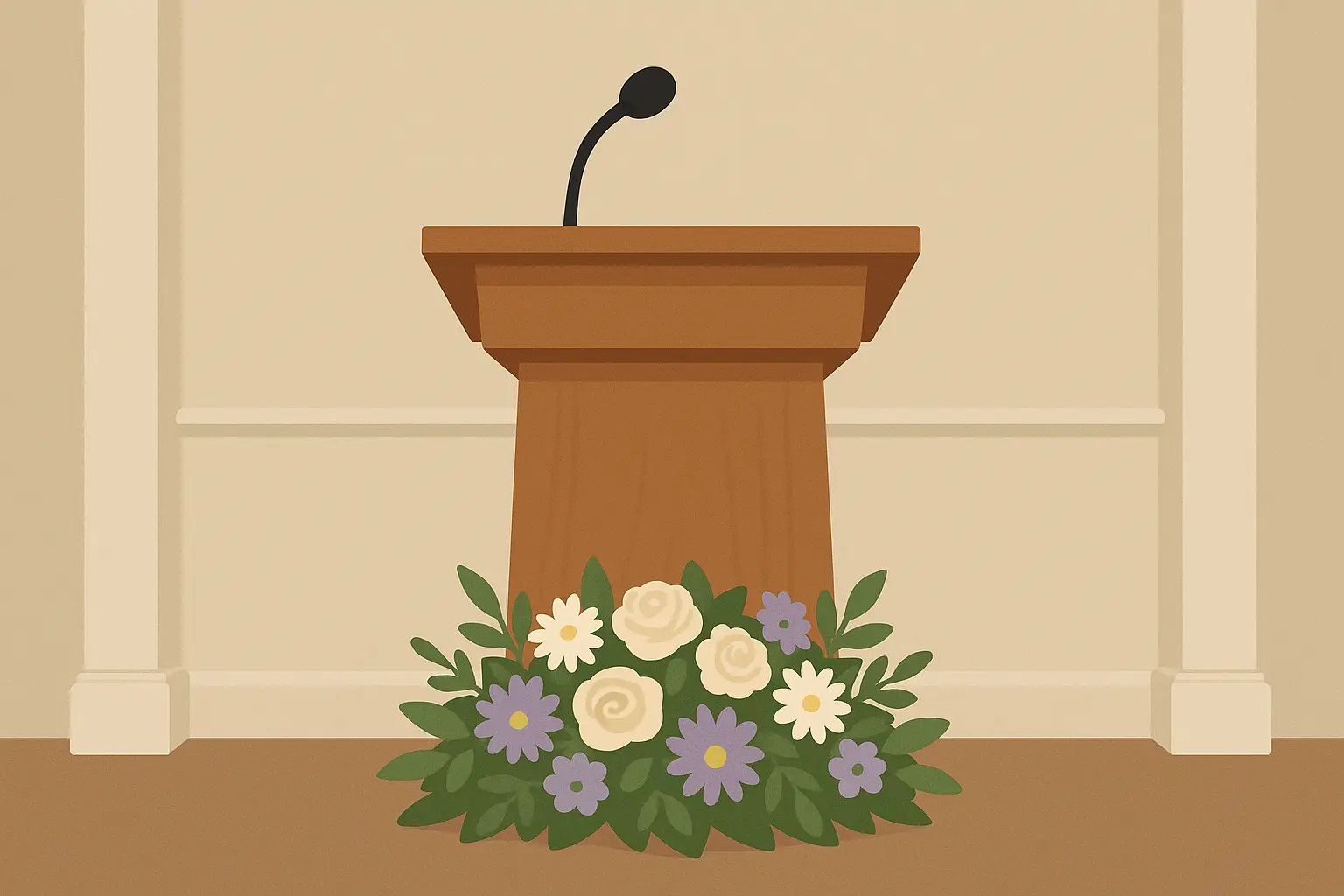
Modern Tools That Actually Help
Digital Resources and Video Tributes
Technology has transformed many aspects of funeral planning, including eulogy writing. Online eulogy generators use artificial intelligence to help create personalized tributes based on specific information about the deceased. These tools don’t replace your memories and emotions but provide frameworks for organizing thoughts when grief makes writing difficult.
Video technology has opened new possibilities for memorial tributes that complement traditional spoken eulogies. Photo slideshows with meaningful music can run during or after your eulogy, providing visual memories that enhance your words. Recorded messages from family members who can’t attend allow their voices to be included in the service.
Live streaming capabilities mean distant family and friends can participate in real-time, even if they can’t be physically present. This technology became essential during recent years but continues to provide value for families spread across distances.

When You Need Professional Help
Sometimes the task of writing a eulogy feels too overwhelming to handle alone, especially when you’re dealing with intense grief or tight time constraints. That’s when professional help can provide the support you need without the guilt.
Eulogy Generator offers a solution that combines professional expertise with personalized guidance. Created by bestselling author and professional eulogy writer Jen Glantz, this tool uses an interactive process to help you create meaningful tributes even when you’re struggling with where to start.
The platform guides you through thoughtful questions that help unlock memories and stories, then creates a customized eulogy that you can edit and refine as needed. This approach provides structure without losing the personal touch that makes eulogies meaningful. With 24/7 customer support and unlimited revisions, it recognizes that grief doesn’t follow normal schedules and that getting the tribute right matters more than getting it done quickly.
Begin creating your meaningful eulogy today with the Eulogy Generator.
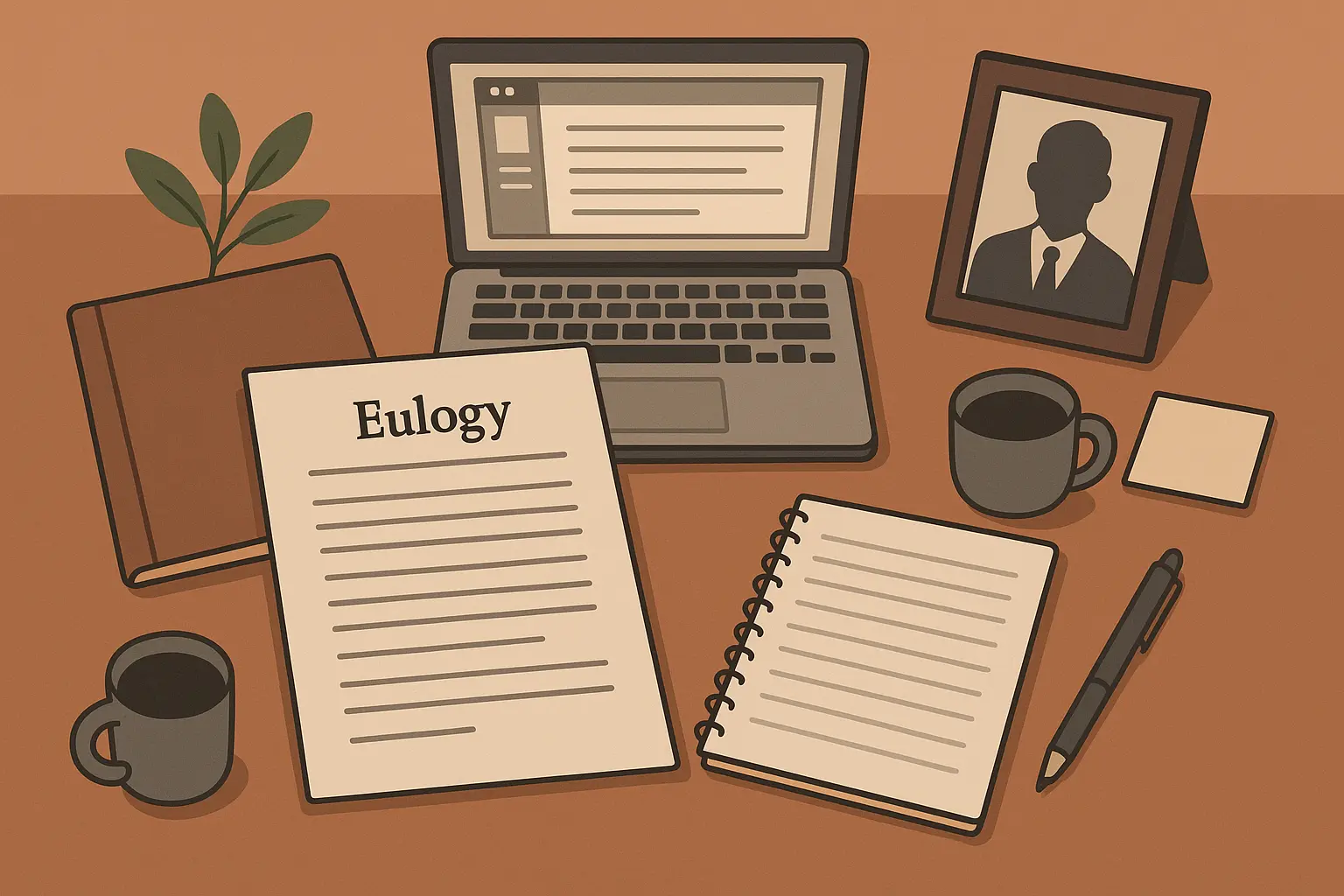
You Can Do This
Here’s what you need to remember: creating a eulogy that truly honors someone’s memory isn’t about perfect words or flawless delivery. It’s about authentic love expressed during one of life’s most difficult moments. The stories you choose, the memories you share, and the genuine emotion you bring to your tribute matter far more than polished presentation skills.
Everyone in that room is there because they cared about the person you’re honoring. They want to hear real memories, genuine feelings, and authentic stories that help them process their own grief while celebrating a life that mattered. Your willingness to stand up and speak during such a difficult time is itself a gift to everyone present.
Whether you write your eulogy independently or use tools to provide structure and guidance, the most important element is your personal connection to the deceased. No technology or professional service can replace the unique memories and relationships that make each tribute special – they can only help you organize and express those precious remembrances more effectively.
Take your time, be gentle with yourself during the process, and remember that showing emotion while honoring someone you loved isn’t a sign of weakness – it’s a testament to the depth of your relationship and the impact they had on your life. That’s exactly what a meaningful eulogy should accomplish.
For additional inspiration and guidance, explore our collection of short eulogy examples that demonstrate how powerful tributes can be created even within brief timeframes, proving that heartfelt remembrance doesn’t require lengthy speeches to make lasting impact.

